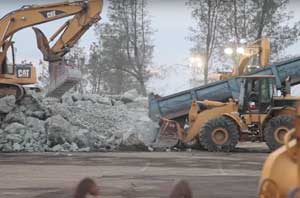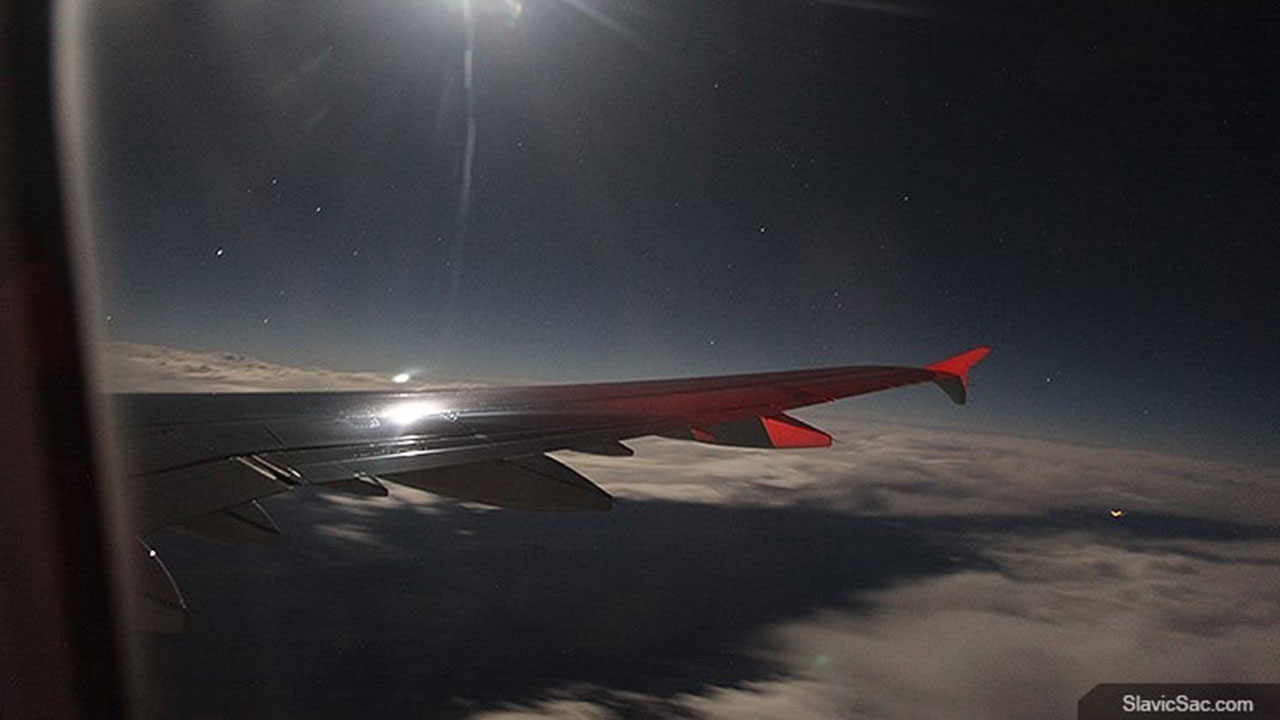As I was traveling from rebellious Kiev to Eastern Ukraine with pastor Gennadiy Mokhnenko, President Poroshenko was forced to block all communications between Ukraine and the breakaway territories of Donetsk and Luhansk. Car and train traffic between the adversaries has virtually stopped. To reach the frontline town of Mariupol, I had to take a route along the Dnieper River, which crosses the country from South Ukraine to the Black Sea. In Melitopol, which used to be the gateway to Crimea before the war, we disembark the train and get in a car to travel toward the frontline.
The same day the media reported another massive shootout between the Ukrainian military and the pro-Kremlin militia; 8 people were killed and more than 10 wounded. It was rumored a group of saboteurs were moving toward Mariupol to deflect the Ukrainians’ attention from the military warehouses in Kharkov; these were exploded the next day. Some said the Russian terrorists were disposing of Ukrainian munitions there, while others believed the Security Service of Ukraine was destroying the evidence of the weapons trade between Poroshenko’s supporters and the enemy. Another opinion was that all the weapons were actually shipped to Donetsk, and the empty warehouses set on fire.
The siege of Mariupol
Mariupol met us with numerous checkpoints where our IDs were thoroughly examined. A system of regularly changed passwords was used to let people pass into the military zone. The residents are immensely tired of the endless war that has been going on for more than 3 years.
Drivers in Mariupol do not wear seat belts – not because of the old Soviet habit, but to be able to quickly jump out of the car in case of the artillery fire. An artillery shell instantly rips a car apart like a tin can – the numerous rusty remains on the side of the road serve as a proof. The thin metal is unable to protect the passengers from the gunfire, and the car turns into a burning coffin on wheels.
The Motherland calls
On my way to the frontline, I visit one of the wrecked school buildings in the town of Shirokino. The former school complex is now totally destroyed.
Making short runs to avoid the sniper fire, we enter one of the buildings. Once we get there, we hear tank shells exploding somewhere close by. My guides tell me we got lucky because there were fewer than usual shots fired today. I had to concur.
In the dark and littered hallways, I step on glass shards and spent cases. Used missile launcher cartridges lay here and there. The school diner is shattered into pieces.
The classrooms where children’s voices could be heard just a few years ago are now empty and disorderly. Cold wind rushes in through the broken windowpanes, slapping me in the face and rustling the pages of abandoned textbooks and notebooks. The students and the teachers who ran away from the horrors of the war in 2014 left all their possessions here in the school complex. The bust of some Soviet leader with his nose broken off mournfully overlooks the devastation. The piano is torn into pieces by an artillery shell. The mural depicting Prince Vladimir and his men is ridden with bullets. Three years ago the town saw a fierce battle in which Ukrainian forces took this part of the Donetsk region back from the rebels.
The high school has lost its entire roof structure; heavy concrete slabs are overhanging the basketball court. Carefully watching our steps, we cross another hallway and see an unexploded artillery shell poking out from the ceiling. My guides explain the shell pierced the roof and got stuck in the slab. It could explode at any moment.
On the second floor we visit the Great Patriotic War museum room. Gennadiy Mokhnenko, a pastor and a chaplain from Mariupol, stands beside a large poster with a Soviet soldier on it. He says that it is very hard for him to see how Russia, the successor of the USSR, is destroying his land.
On the front lines
The famous Azov Sea resort area near Mariupol is ruined. The town of Shirokino is completely destroyed. Luxury homes are leveled, five-star hotels turned into rubble. Only the Russian Orthodox Church building remains intact.
One of the field encampments of the Ukrainians is situated in the former hotel complex that was virtually destroyed by enemy fire. We are standing among the huge piles of rubbish – the result of massive artillery fire from both sides. One of the balconies fell two stories from its original place. On another balcony is a life-size doll dressed in a vyshyvanka shirt – either as a joke, or as a decoy for the snipers.
The resort area is littered with broken concrete, pieces of wood, bricks and shell fragments. Ukrainian soldiers do not have to chop wood – whenever they need any fuel to stay warm, they just collect the tree branches severed by the gunfire.
The resort complex is just 50 meters away from the Azov Sea, but no one has been swimming here for the past three years; the beach is barricaded and the sea bottom is mined.
The Ukrainian line of defense is prepared for a surprise attack from the sea.
We stand amidst a squad of Ukrainian Army regulars who defend the front line. Most of them are young men who came here from all over the country. The conversations are both in Ukrainian and Russian. The soldiers buy their equipment and uniforms at their own expense. One of them is wearing a T-shirt with a large yellow trident, the coat-of-arms of Ukraine.
The degree of patriotism seems so high here that even those who used to identify with Russians have now become lifetime enemies of the “Soviet Russia”.
“In America, in Western countries, the people are free,” says our guide, Chaplain Albert. “Why must we remain hostages of the Soviet slave mentality?”
Albert, like many other Ukrainians, learned the words of his country’s anthem at the Maidan, and now he volunteers for the army fighting in Eastern Ukraine. He keeps the soldiers’ spirits up and brings them food and water.
In the Ukrainian Army headquarters
After meeting the soldiers, we go to the so-called headquarters of the Ukrainian Army. There is a US-made Hummer, an old Soviet MAZ truck and a few other vehicles parked at the camouflaged high-rise building.
The soldiers are sawing and splitting wood to keep themselves warm during the cold winter nights.
The fighting spirit of the mixed Ukrainian army is very strong. It is constantly fueled by support of the locals. Instead of moldy Soviet military rations, frontline soldiers eat homemade preserves, fresh meat and other food delivered by volunteers. This is probably the only thing, besides the will to win, abundant in the Ukrainian Army.
The soldiers have their families, their children and their homes behind them. They say they have no place to run.
The thuds of mortar shells are heard from somewhere not too far away. I feel a bit uneasy and instinctively try to stay closer to the soldiers.
When we leave the improvised headquarters, we are accompanied by lady snipers who came out to warm up in the bright March sun.
What is this war fought over?
Definitely not the Russian language; at least not the Russian language alone. This is what I’ve been told by all the people I have met in Eastern, Central and Western Ukraine. Trust me, in the past 5 years I have crossed the country three times from Lvov to Mariupol. I visited Lutsk, Kiev, Donetsk, Slavyansk and many other places. And nowhere, I repeat, nowhere was I called a “Moskal” or any other slur word, despite the fact I only spoke Russian.
One of my friends from Lutsk does not exactly agree with me. He believes that Kiev should not have forcefully “Ukrainianized” the Eastern part of the country. According to him, it significantly accelerated and escalated the conflict between the two parts of the divided nation.
No matter what the Russian TV anchors tell you, the criminal actions of the “cynical Bandera supporters”, as President Poroshenko calls them, are not the reason for this war either. On the contrary, many refugees from the East are surprised by the unexpected welcome they receive when they come to Western parts of the country.
If you are one of the people who has watched too much of the depressing Russian propaganda, and you believe in the bands of Stepan Bandera’s followers roaming wild in the forests of Galicia, I recommend you buy a ticket and visit some place in Western Ukraine. I’m sure this fascinating journey will make you change your mind.
In my humble opinion, today’s Ukraine is a hostage of the geopolitical competition between the East and the West, between the US/EU on one side, and Russia on the other side. I totally agree with Pastor Gennadiy Mokhnenko that Western (and Central) Ukraine is growing away from Soviet mentality and leaving the Russia’s protectorate for good. You can definitely see it in the mood of Ukrainian people. They greet America and Americans much warmer than they do Russians.
NATO is fighting on Ukraine’s side
During my travel in Eastern Ukraine, news came from Odessa that some military aid from the West had arrived in that Black Sea port – namely, a few discarded border patrol ships from NATO countries. As usual, the Russian media has told the entire world about yet another shipment of military aid. In response, the Russian army in the Rostov region began sending in modern tanks and other military equipment.
Using the information from Russian TV channels, I tried to find any signs of NATO military aid. But no matter how I tried, I could not spot any significant quantities of Western armaments apart from two or three Hummers from the Gulf War period. Here and there you could see NATO helmets sent by private donors from Europe and US. No instructors, no German tanks, just boots and bandages – this is all the non-lethal help from volunteers abroad. Plus, maybe, bottles of Coca Cola and other food products that Mokhnenko and his team of chaplains supply to the soldiers.
“Unfortunately, NATO soldiers are not risking their lives for our families,” Mokhnenko commented on the common myth about Western support of Ukraine. “Our guys have to do it. They do not fight for the corrupt administration; they have their homes and their families behind them that no one else is going to save from the godless hordes.”
Ukraine’s armaments make you want to cry
I would like to note that, compared to modern Russian weaponry, the Ukrainian Army is impossible to look upon without tears.
If Kiev had any professional propagandists, they could destroy the enemy in one second. All they would have to do is publish some actual pictures of the Ukrainian soldiers’ equipment, and all the Russians would die laughing before even making it to the front lines.
Many of the soldiers carry the old Soviet assault rifles from Brezhnev’s times that fall apart right in the middle of battle. Ukrainians use house doors, iron gates and other similar items as makeshift shields. Watch any World War II movie where the communication operator drags a roll of wire. Can you imagine this going on in a 21st century army? But this is exactly how the Ukrainian Army operates today.
I did not notice any heavy military vehicles on the Ukrainian side; either they are well hidden, or the Ukrainian Army is indeed surviving on bare enthusiasm. Only in one garage in a coastal town did we see a couple of rusty Soviet armored personnel carriers.
The pro-Russian forces, on the other hand, are well-equipped with assault weapons; there is a Russian tank in every garage, my companions tell me pointing at deep craters left by the merciless Grad rockets.
Just like World War II
Now I should add a few words about the Ukrainian checkpoints and headquarters. The checkpoints are built from ordinary concrete blocks stacked one onto another, with gaping holes for observation and shooting.
And this is the best-case scenario. Normally Ukrainian fortifications consist of logs or sandbags. Here and there you can see dugouts with stovepipes sticking up from the ground. Today’s Eastern Ukraine would be a perfect location for Hollywood moviemakers to shoot another World War II blockbuster.
We travel on roads beaten up by time and artillery shells. We stay on our predetermined route because the road shoulders and the fields are mined. My guides tell me there have been incidents with civilians stepping on landmines.
About a half of the fired artillery shells remain in the ground unexploded. This is the main danger of this “hybrid” war, as it is called in the West.
“The insidiousness of the Russian shells is that they stay unexploded in the ground or inside buildings,” says a chaplain who goes by the name Albert. “They can inflict harm at any moment.”
Dozens of unexploded mines are stuck right in the road daily traveled by frontline missionaries such as Albert and Gennadiy. We drove over at least ten of those mines.
As one of the Ukrainian soldiers told me, “Putin’s warriors” in Donetsk are launching mines and rockets without aiming, just to spend the ammunition and report a job well done. Experts say it will take at least ten years after the war to clear the area of unexploded ordnance.
It is said neither side in this conflict has a map of their minefields. First the area was overtaken by rebels who fought against local militia. Those volunteers mined all the important routes. Professional soldiers and saboteurs have also left mine fields behind them. And now the regular army and the National Guard are operating in the area. This is why Ukrainian minesweepers set up bright red and white signs saying “Danger! Mines!” through which no one passes.
The trees on the front line are shaven by a barrage of bullets and artillery shells. Those few locals who decided not to leave the dangerous area stay away from the forest to avoid exploding traps. Soldiers are unable to use chainsaws because the tree trunks have numerous lead bullets embedded in them.
We carefully step down into one of the trenches dug by Ukrainians back in 2014 when the front line was close to Mariupol. I try to walk step-in-step with my guide. The trenches go in a zigzag pattern so an exploding artillery shell would cause as little damage as possible. Anti-tank fortifications were built by local people, including Gennadiy Mokhnenko, to keep rebels from entering the town. Everyone, including children and teenagers, participated.
Ukrainian volunteers implemented a unique method of protection from tank fire. They use a regular wire fence, make it into a cube 1.5 meters wide, line it with sackcloth and fill it up with sand and rocks. These defense devices can stop the direct hit of almost any artillery shell. This NATO technology is probably the only sign of the mighty Western alliance in East Ukraine.
Pastor Mokhnenko is outraged. “This is surreal! I am a Russian, and I have to build a line of defense from the Russian troops attacking my town!”
According to Gennadiy and his comrades-in-arms, the reason why the Kremlin was unable to overtake the town is that its entire population stood united to protect their motherland.
Russian troops in the Eastern Ukraine
Try telling any Ukrainian there are no Russian army or Russian weapons in Eastern Ukraine. That would be the same as telling a New Yorker you do not see any skyscrapers or taxi cabs in Manhattan. You would be considered insane or, at the very least, deaf and blind.
Both soldiers and civilians tell me Russian weapons are definitely here; this is what is destroying frontline towns and villages. Unexploded Russian shells are sticking out of the pavement and from the roofs of half-demolished buildings. One of the Donetsk refugees told me rebel forces often fire Grad rockets right from the housing districts of the town. By the time the return fire comes in, the rebels are already gone, and the next day the Russian media publishes another report about “the Ukrainian army shooting at peaceful civilians in Donbass”.
Remember how Vladimir Putin claimed publically he would use noncombatants as human shields?
This is what is happening with the Russian regular army. Local residents, army officers and the Intelligence claim Donetsk and Luhansk were visited by the same “little green men” as was Crimea some time earlier.
It is rumored that Donetsk and Luhansk will soon join the Russian Federation by means of a referendum; this would be a viable political scenario.
Not just professional Kremlin spies, snipers and instructors fight on the rebels’ side. Ukrainian forces regularly capture Russian soldiers without any insignia on their uniforms. Mr. Putin claims, they “got lost” trying to find their units in the Tambov region. At least this is what I was told by Ukrainian patriots.
Leaving the war zone, we were stopped by Ukrainian counterintelligence officers driving a modern armored vehicle. Once they are sure we do not pose any danger, they let us back into Mariupol.
Mariupol’s defense against Russia
On May 9th, 2014 a group of rebels attacked Mariupol in an attempt to put the local administration under their control. The militia, as the pro-Russian forces are called, were going to overtake Mariupol in one sweep after Luhansk and Donetsk. There was a foiled attempt to attack the city administration building and the Ministry of Internal Affairs, but the police and volunteers fought them off and drove them out of town. Dozens of people lost their lives in that battle. Both buildings still stand deserted.
Chaplain Gennadiy Mokhnenko says the attackers were “drug users and bandits with a criminal past”. According to him, as well as local people and refugees from Donetsk, in cities where power was seized by pro-Russian forces, leading posts were taken by “scoundrels and marginals” who did not find a place for themselves under Yanukovich or the current Ukrainian administration.
“Criminals and bandits, pumped-up with drugs, took weapons and started wrecking our town,” says Mokhnenko. “They robbed banks and stores, set the police headquarters on fire, and tried to take power”.
Despite victory over the separatists, today’s Mariupol stays on alert for possible attacks from sea or land. Daily “fireworks” on the frontline are taken in stride.
They say the country has not seen such a rise of patriotism since it gained independence. Everywhere, including the war zone, you can see Ukrainian flags, or OUN (Organization of Ukrainian Nationalists) flags in Western Ukraine. Deserted buildings often bear the famous slogan: “Putin is a dick”.
Life in the Donetsk Republic
Unfortunately, this trip I could not get into the territory of the unrecognized Donetsk Republic. During my stay in the “Anti-terrorist operation zone”, President Poroshenko on advice from Intelligence stopped all railway and vehicle traffic to Donetsk and Luhansk. He did it after the militiamen found and published proof of weapons and coal smuggling happening with Poroshenko’s approval.
One of the Donetsk refugees told me about the grim future the so-called Donetsk People’s Republic is facing. According to him, all the more promising people have left the region fleeing from the war and the marauders.
According to him, most of those who stayed on the other side of the border have resorted to drugs and Russian pseudo-patriotism. Almost all factories and stores in Donetsk are shut down because half of the population has fled. The rest have no option other than to take up arms and fight for the pro-Russian administration.
A former Protestant pastor did not even have time to say goodbye to his parishioners before leaving Donetsk. The refugees avoid sharing their names or posing for photos; they say they do not want to add risk to their friends who stayed on the other side of the border.
At the Donetsk Republic border we saw a mile-long line of people who were bringing eggs, meat, milk and other food from Mariupol.
“They boast about freeing their town from Bandera’s men, but they come to us to buy food”, commented one of the local residents.
Trading on the blood of their own people
I was told by an instructor from the Tornado battalion, Poroshenko’s men shamelessly trade coal and even weapons with the Donetsk Republic. Train cars loaded with the fossil fuel from the occupied mines keep rolling from the ATO area towards Kiev. In return, the defenders of Donbass are supplied with weapons and ammunition that are used against Poroshenko’s own citizens.
“Our fighters managed to uncover the proof of the criminal actions of Poroshenko’s regime,” says Aleksey Tarasov, one of the first members of the liberation forces that aim to free Donbass from “Yanokovich’s gang and the Russian government’s henchmen”.
According to Tarasov, who is now hunted by both Ukrainian and Russian Intelligence, the militiamen have documented shipments of weapons sent to pro-Russian forces from Kiev.
“We will not allow Poroshenko to make his business on blood,” says the veteran of the liberation movement. “The corrupt administration of Ukraine will face the international tribunal in The Hague for their crimes.”
The Tornado volunteer battalion suffered heavy losses from Russian tanks and artillery fire in the Battle of Ilovaysk. The battalion commander is currently under arrest in Kiev. He and his soldiers are accused of numerous war crimes such as rape and pillaging.
According to Aleksey, the volunteers were protecting their homes and possessions from being captured by the pro-Russian gangs. He claims the Ukrainian administration makes millions from the illegal trade, and tries to cover up the traces by physically eliminating the inconvenient witnesses.
An anti-terrorist operation or a war?
We should clarify the local residents call the current events nothing but a war. Indeed, anyone who has been in the so-called “ATO Zone” cannot possibly call this an “anti-terrorist operation”.
According to the locals neither the notorious Minsk Protocol nor the OSCE observers, have much influence over the peacekeeping process.
“OSCE observers usually sit out in the bushes during the shootout, and then it turns out no one has seen anything,” says volunteer Yevgeniy Kovalenko who drives his beat-up Lada along the frontline every day.
I’m riding the train to Kiev on the deteriorating railroad. My travel companions are “ATO veterans” in military uniforms. At the stops they peacefully smoke foul-smelling Ukrainian cigarettes.
I listen to the conversations. The divided Ukraine is sure of one thing: Putin shall not pass further than Mariupol; otherwise Russia will see bloodshed.
My next train going from Lvov to Moscow is completely empty. There is only one other passenger in my car.
P.S. Two weeks after my journey to the war zone, an OSCE vehicle blew up on a landmine roughly in the same area visited by our group. One of the peacekeepers was killed, several more were wounded.







